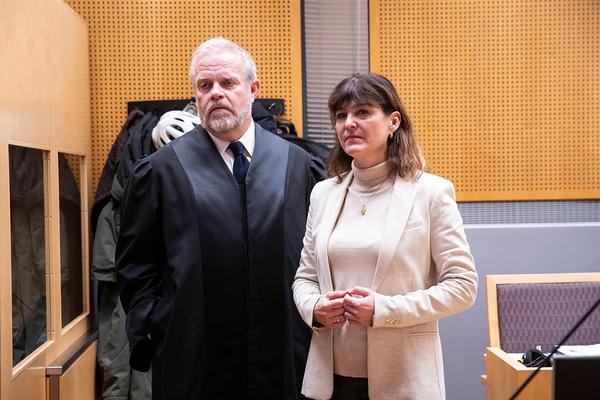27. mai 2015
How subscription models lead to more trustworthy journalism

Ryan Holiday is a marketer. Even his name is catchy. Just like the title of his first book: Trust me I’m […]
Ryan Holiday is a marketer. Even his name is catchy. Just like the title of his first book: Trust me I’m Lying. Confessions of a Media Manipulator.
Ryan Holiday is a marketer. Even his name is catchy. Just like the title of his first book: Trust me I’m Lying. Confessions of a Media Manipulator (2012). Being a top marketer – Holiday served as Director of Marketing at American Apparel – his book is also written in a catchy way, stuffed with punch lines. Most of them revolve around how online journalism is broken. Holiday’s diagnosis is as follows: Most online media outlets make money from selling ads. In general, the more traffic they have, the more ads they sell. Thus, the task of most online journalists is to generate traffic. In their quest for more page views, journalists are desperate for juicy stories. Marketers and ‘media manipulators’, like Ryan Holiday himself, supply those journalists with everything they need to do this, while serving their own agendas. In the book’s opening pages, Holiday explains how he does this:
He designs a controversial billboard for a client and makes sure it gets a good spot in LA. Then he buys a spray can and defaces his own billboard. For act three, Holiday drives by and snaps a photo of the demolished billboard, which he sends to a blogger, who gladly posts it. Uproar follows. Box office soars.
What is crucial in a campaign likes this, Holiday writes, is to “trade up the chain”. You can begin by sending your news to a low-profile blogger with zero to none journalistic standards. He will probably publish it. You now have a link to your fake controversy. Then you just wait for a more well-known blogger to pick it up. The billboard example is quite innocent. But what happens when Politico begins to follow obscure presidential candidates just to get more traffic on their site, to generate more sales? That changes the political arena.
With our Dutch journalism platform De Correspondent we wanted to escape this dangerous dynamic. In the spring of 2013, we expressed the wish to start an online publication that would focus on background, analysis and investigative reporting. The kind of stories that tend to escape the radar of mainstream media because they do not conform to what is normally understood to be ’news.’ Because we wanted to be an independent outlet, we decided to focus only on readers as our source of income. Our site would be free of advertising and we didn’t want investment capital. Instead, we asked for a subscription fee of 60 euros per year. We figured we would give it a try if 15,000 people committed.
To our astonishment, almost 20,000 people backed us within a month. Some of them also donated extra money. At the end of our crowd funding campaign, we had raised $1.7M. We got to work, hired a staff of 24, moved into an office in Amsterdam and built the platform. On September 30th, 2013, we launched decorrespondent.nl. From that moment on, we have published around five in-depth stories, podcasts and documentaries every day.
At the time of writing, we have been live for eighteen months. It is truly liberating to only worry about the needs of our 34,000 members and not those of advertisers. Instead of viewing members as target groups for advertisers, we only focus on informing them in the best possible way. Instead of starting ad-friendly sections like travel and career, we can make editorial judgments solely based on the importance of a subject. Rather than hunting for pageviews, we can hunt for great stories.
The contrast to sites without the luxury of focusing on their reader’s needs is enormous. In December 2014, The New Yorker profiled . It portrays ‘Viral guy’ Emerson Spartz, who obsesses over page views. His business model is to plaster his sites with ads. Originality is not a part of his business standards, because copy/pasting viral hits from competitors will generate more revenue for less effort. “More original lists take more time to put together, and we’ve found that people are no more likely to click on them.” Please have a look at the headlines from his most popular site Dose.com, to understand what kind of articles Emerson’s attitude serves you:
21 Disney Cakes That Have No Business Being Sold To Kids…They’re Horrifying
Watch What Happens When This Girl Asks 100 Guys to Have Sex With Her
Watch This 102-Year-Old Former Dancer As She Sees Old Video of Herself for the First Time
The Manhattan Bridge Is World Famous. What They Just Found Living There Shocked Everyone
I don’t mind that Spartz has chosen this business model. I am impressed that he has managed to build a company around it. But the problem with this King of Clickbait is that a growing number of journalists believe they should compete with him. They adopt his tactics. They start preaching the viral Evangelic in their editorial offices. And of course they are, because they get paid by the eyeballs they reach.
Thinking about how to reach your audience is fine. But lowering your journalism standards to go viral is not. And that’s exactly what happens when you – as a journalist – look to Emerson Spartz for inspiration. You will only focus on pageviews. You won’t worry about building a relationship with readers. You just want to trick them into clicking on your next listicle.
This is a short-term strategy to build traffic. And if you’ve first gone down that road, it is hard to turn back. When the advertising revenues dry up (and they will because Google, Facebook and other platforms are taking over the market), you won’t be able to ask for a donation or a subscription fee. The reason is that you have no loyal readers left. You will end up hoping for one more hit on Facebook. ‘Facebook should be eighty per cent of your effort’, Spartz says.
It will be right around that time that audiences lose its patience with click bait and look for a thoughtful alternative: deep reads, analysis.
A news site that is focused on getting them informed rather than addicted.
A site they will be willing to pay for.
De Correspondent is hoping to be that site. We are investing all of our resources in strengthening the bond with our readers. For example, we try to help them share their knowledge. Because we believe every reader is an expert at something. Imagine that our health care correspondent covers the treatment of an illness. As a doctor or a patient, you will have something interesting to share with him. So we believe our correspondent should reach out to them.
His readers are the biggest untapped resource of knowledge. 3,000 doctors know more than just one health care correspondent. That is why our correspondents always announce a new research project up front. This allows readers to reach out if they know something about it and want to share. This is also why our correspondents take part in the conversations below their articles.
Readers are our only stakeholders. So we can also be transparent about how we’re spending their subscription fee. Celebrating our first anniversary, we shared a pie chart. It showed our members exactly how their 60 euros were spent. This transparency also led to interesting discussions about how to prioritize our spending. Most importantly, however, it led to more trust.
And that is the essence of a subscription model. It rewards investing in the trust of your readers. An advertising model doesn’t. When selling ads, you have to decide how far you want to go in fooling your readers. How big will I make that native ad-label? Must I package these photo series in a slideshow because it will lead to more clicks? Should I make the question in my headline more click-worthy, even if the article doesn’t really answer it?
Media manipulator Ryan Holiday describes how the newspapers of the nineteenth century steadily became more sensational. It began because the newspaper boys on the street needed spectacular headlines to sell papers. Trust in newspapers eroded. The publisher Adolph Ochs came up with a solution: He introduced subscriptions. From that moment on, readers would find the newspaper on their doorsteps. Regardless of how spectacular the headlines were.
The model allowed journalists to focus on writing important stories and ignore the cheap stories. It led to the rise of one of the world’s finest newspapers: The New York Times. Ochs created an opportunity to steer away from pulp journalism by introducing subscriptions. Similarly, web publishers can escape the ads race to the bottom by focusing on the needs of their readers.
Ernst-Jan Pfauth is co-founder and publisher of De Correspondent, a Dutch-language, online journalism platform. He is the former Digital Editor-in-Chief at NRC Handelsblad and The Next Web Blog.



